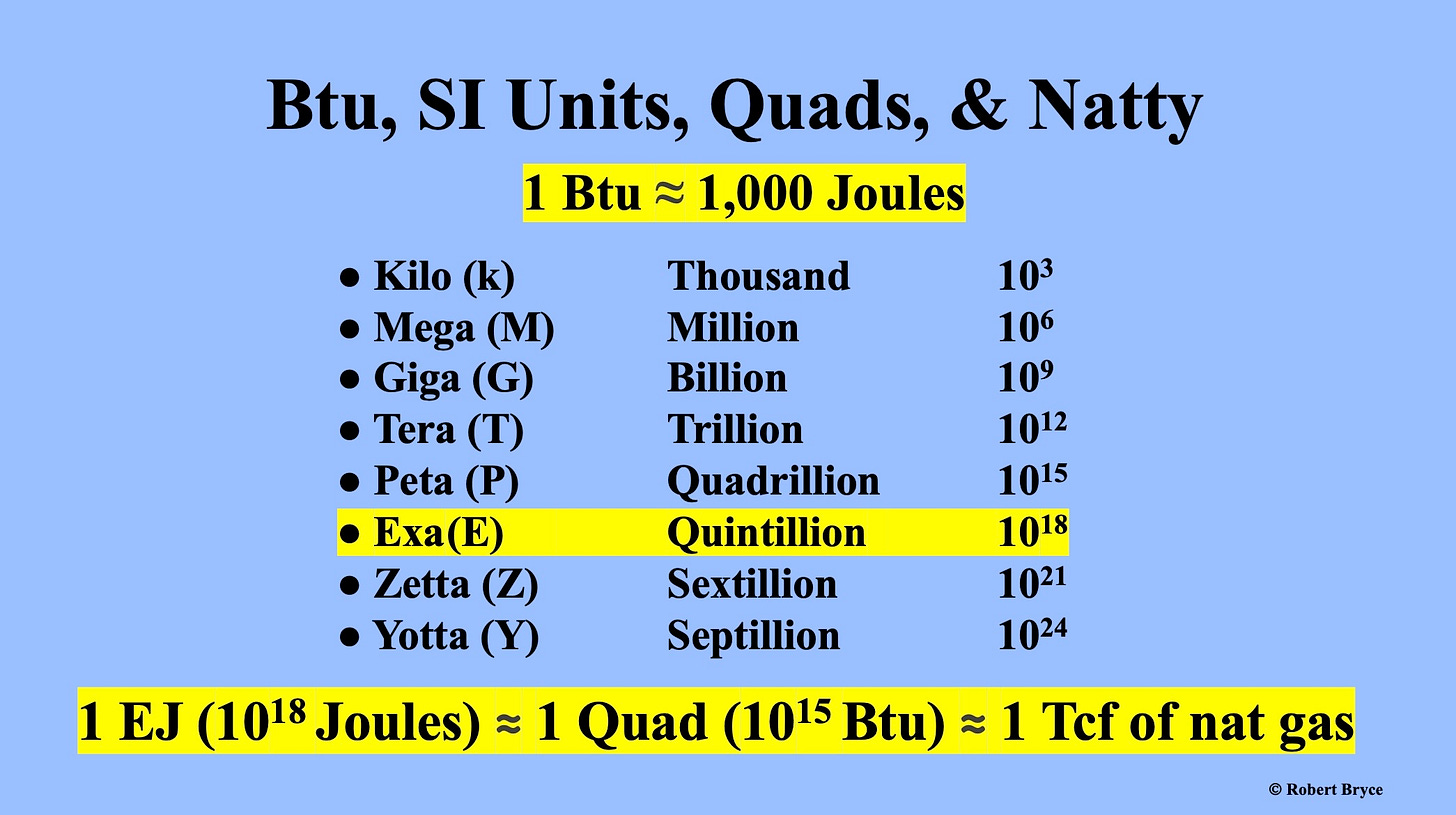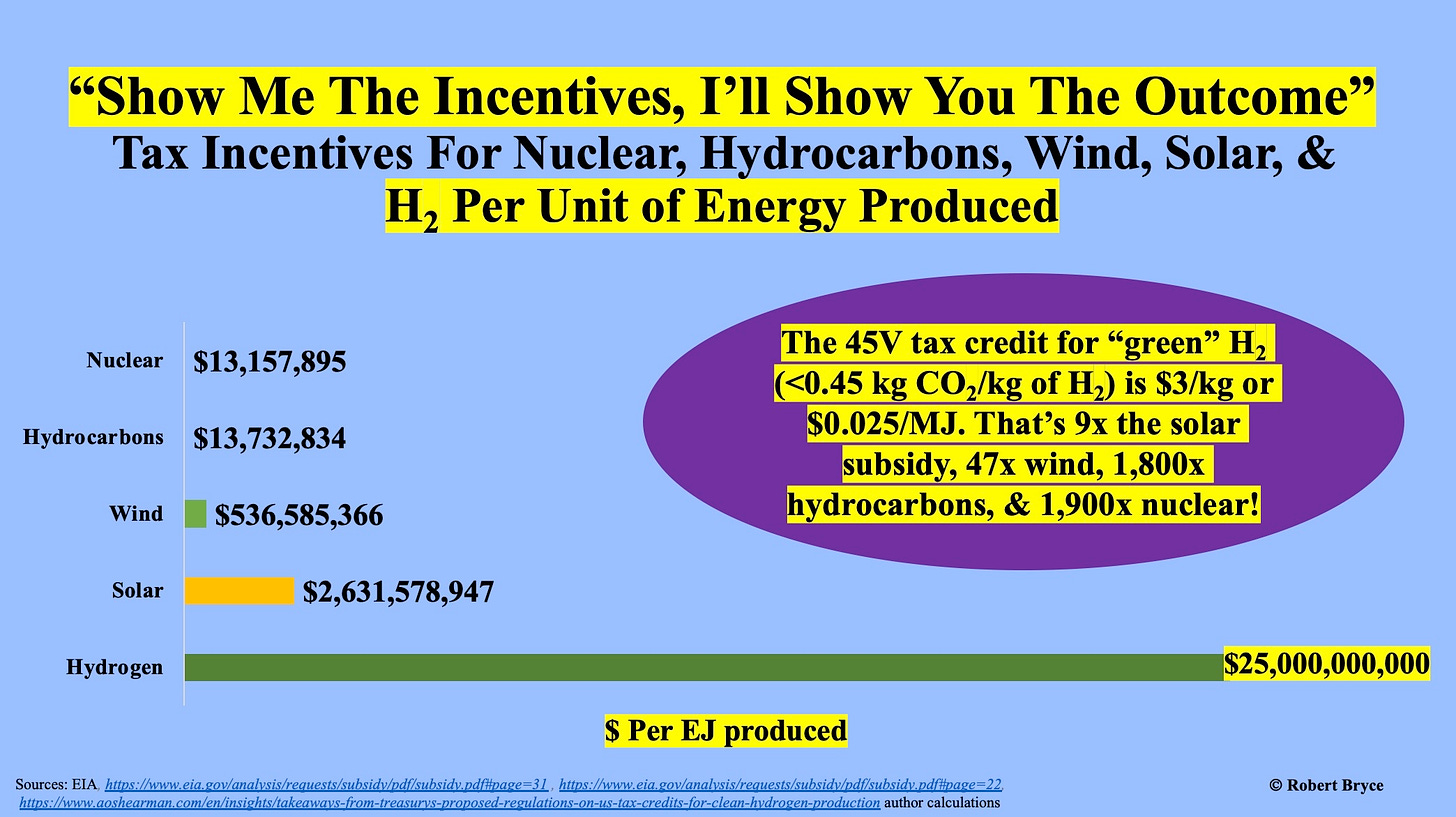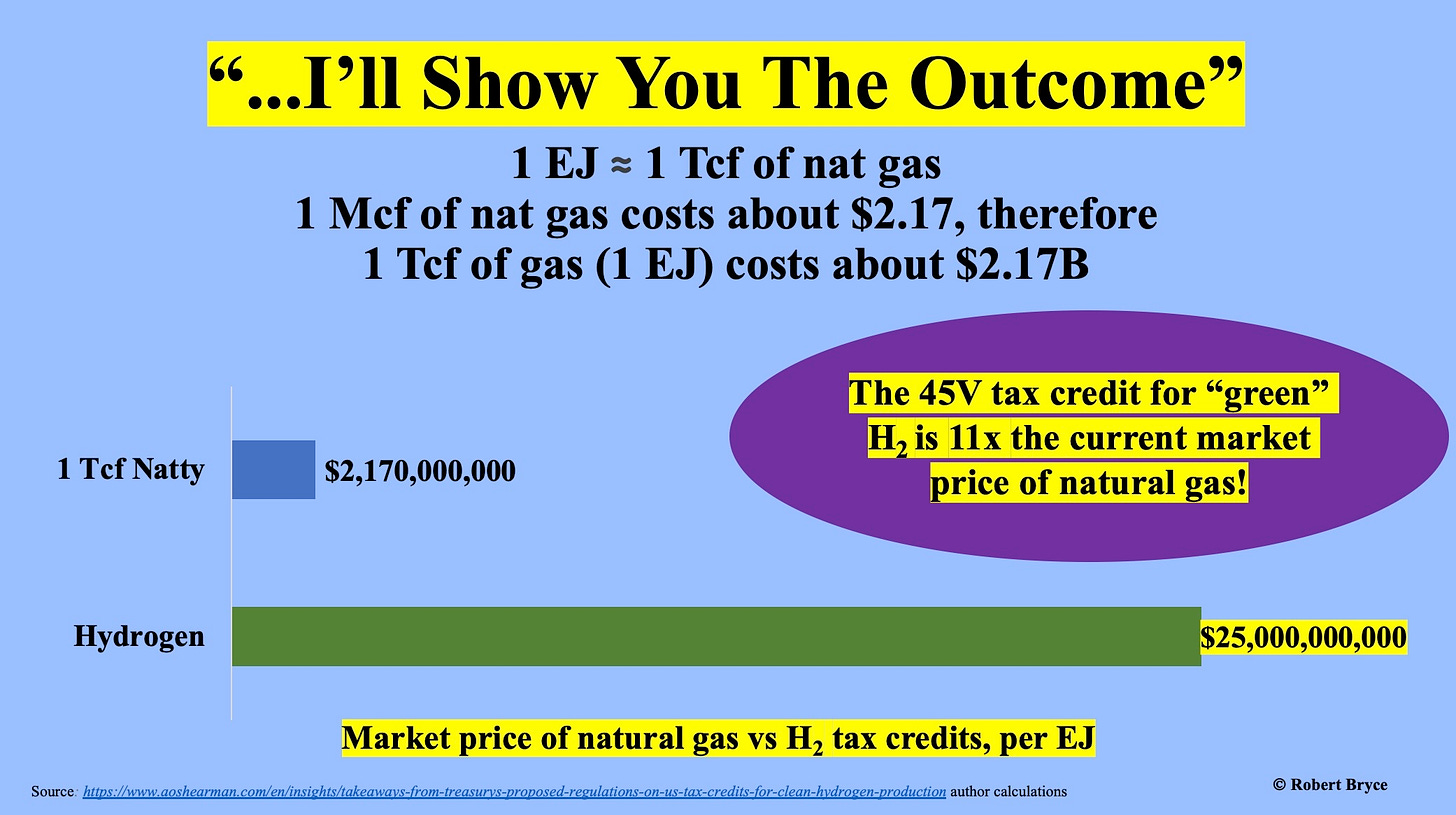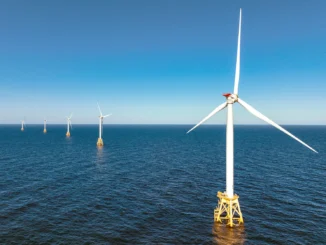
ENB Pub Note: Please follow Robert Bryce on his Substack for great commentary and throught leadership in the industry. I have enjoyed my conversations with Robert and he is a great friend to the show.
The late Charlie Munger was among the most successful investors of the modern era. Munger, who died late last year, was the vice chairman at Berkshire Hathaway, the conglomerate headed by his friend and colleague, Warren Buffett. Munger, a native of Omaha, had many pithy sayings, but among his most memorable was: “Show me the incentives, and I’ll show you the outcome.”
Whenever you wonder why the U.S. isn’t building more nuclear power plants and is instead lavishing hundreds of billions of dollars on politically popular forms of alt-energy, remember Munger’s line.
As I noted in May in “The H Stands For Hype,” few segments of the energy sector have gotten more media hype in recent years than hydrogen. That hype has gone into overdrive because of fat government subsidies. The German government has earmarked some $14.2 billion for investment in about two dozen hydrogen projects. I continued:
Here in the U.S., the 45V tax credit in the Inflation Reduction Act provides lucrative subsidies for hydrogen production. Big business is lining up to get those subsidies. In February, energy giant Exxon Mobil warned that it might cancel a proposed hydrogen project at its Baytown, Texas refinery depending on how the Treasury Department interpreted the “clean” hydrogen rules in the IRA. Regardless of tax credits and subsidies, making and using hydrogen is a high-entropy, high-cost process. As a friend in the oil refining business told me last year, “If you like $6-per-gallon gasoline, you’re gonna love $14-to-$20-per-gallon hydrogen.”…Hydrogen is insanely expensive, in energy terms, to manufacture. It takes about three units of energy, in the form of electricity, to produce two units of hydrogen energy. In other words, the hydrogen economy requires scads of electricity (a high quality form of energy) to make a tiny molecule that’s hard to handle, difficult to store, and expensive to use.
On Thursday, I’ll be speaking about hydrogen and alt-energy in Eldorado, Texas. I was invited to speak in Eldorado by a group of local ranchers who are concerned about a proposed hydrogen project in Schleicher and Tom Green Counties that is being pushed by ET Fuels, a Dublin-based firm. The event is free and open to the public. The caption for my talk: “Money, Physics, & The Backlash Against Alt-Energy.”

The ranchers are also concerned about other massive alt-energy projects being proposed for the Edwards Plateau. Two publicly traded companies — Apex Clean Energy, a subsidiary of Ares Management Corporation (market cap: $44 billion), and NextEra Energy (market cap: $159 billion) — are also developing hydrogen projects in the region. As I have previously reported, NextEra has become an expert at subsidy mining. The company’s latest 10-K filing shows it has nearly $3.7 billion in tax credit carryforwards that it will use to defray its future tax bills. Apex and NextEra are reportedly planning to lease and pave hundreds of thousands of acres on the Edwards Plateau with solar panels and wind turbines.
Now, back to hydrogen. It’s the most common element in the universe. It’s also one of the most difficult to produce and manage. About 98% of global hydrogen production now comes from hydrocarbons, with some 75% from natural gas via the steam methane reforming process. Oil refiners use a lot of hydrogen to remove sulfur from motor fuel. Water electrolysis, producing hydrogen by splitting water molecules, accounts for less than 2% of world hydrogen output. Why does electrolysis account for such a small percentage? The answer is simple: it requires vast amounts of electricity.
Under rules published earlier this year by the Treasury Department and Internal Revenue Service, hydrogen producers can collect $3 per kilogram of hydrogen under the production tax credit if they use electricity from low- or no-carbon sources. (The exact amount is less than 0.45 kilograms of greenhouse gas per kg of hydrogen.) According to the latest figures from the Treasury Department, the PTC is the single most expensive energy-related tax expenditure in the federal code. Between 2024 and 2033, the PTC is expected to cost some $276.6 billion.
In Schleicher County, ET Fuels plans to capitalize on the PTC. It aims to build 600 megawatts of alt-energy capacity, split evenly between wind and solar, to fuel electrolyzers that will produce hydrogen from local groundwater. (The company plans to convert the hydrogen into methanol for motor fuel for ocean-going ships.) That means ET Fuels will be eligible for the $3/kg subsidy. How does that stack up to other subsidies and the market price of natural gas? The numbers are simply astonishing.

Before we jump into the subsidies, a quick refresher on SI units and exajoules (EJ) should be helpful. As seen above, 1 EJ is roughly equal to 1 quadrillion Btu. It’s also approximately equal to the energy contained in 1 trillion cubic feet of natural gas.

As you may recall, I’ve been tracking federal alt-energy subsidies for a while. I wrote two pieces on the subject last year, including this piece (denominated in EJ) and this one (denominated in quads). One kilo of hydrogen contains about 120 megajoules (MJ) of energy. That means hydrogen producers can collect tax credits of $0.025 per MJ of energy produced. As seen above, that works out to $25 billion per EJ, which is more than 9 times what’s given to solar and a whopping 1,900 times the amount given to nuclear.

The numbers are similarly gobsmacking when comparing hydrogen subsidies with the market price of natural gas. Natural gas prices have increased over the past week or two and now stand at about $2.17 per million Btu. Thus, the tax credit for “green” hydrogen is worth 11 times the current market price of natural gas.
I will close with another Munger quote: “If you have a dumb incentive system, you get dumb outcomes.” It’s hard to conjure a dumber incentive system than one that gives hydrogen producers tax credits 1,900 times larger than those given to nuclear energy producers.
I will be writing more about the hydrogen push in Texas and the rural backlash against alt-energy over the coming weeks. If you happen to be in Eldorado on Thursday afternoon, stop by the Schleicher County Civic Center. It will be fun.
Source: Robertbryce.substack.com
Take the Survey at https://survey.energynewsbeat.com/






